Event Name: Field visit to Agriculture Farms
Place: Modallaguda Village, Mamidipalle road, R.R.District
Date of Visit : 14th October 2024
Time :10:00 AM
Venue :Cotton, Rice and Guava Farm
Objective:
Outcomes:
1. Cotton Farming
Nature of Crop:
Cotton is a commercial crop, primarily cultivated for its fibre. The crop is essential for the textile industry, and the cotton plant produces fibres that are processed into yarn and fabric.
Season Duration:
Cotton is cultivated once a year and requires approximately 3 months to mature fully:
- Budding: Takes 45 days.
-Flowering: 5 days.
- Fruit: 60 days.
-Total Crop Duration: July to February.
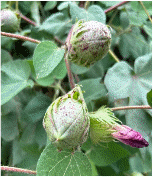
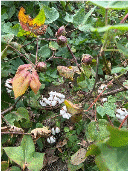
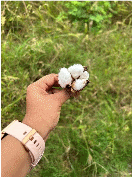
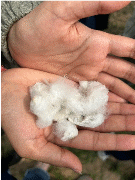
(whole plantation process Budding, Flowering, Fruit, Harvesting, Total Duration)
Farming Process:
Pesticide Use:
No specific pesticides were mentioned for cotton during the visit, but farmers generally rely on crop protection methods to combat pests, ensuring good crop yield.
Number of Farmers Required:
Soil Types:
Cotton thrives best inblack and red soils . The rich nutrient composition of these soils supports cotton growth across the region.
Other Observations:
The cost to cultivate one acre of cotton is estimated at 1 lakh INR, with a potential profit of 2 lakhs INR, yielding double the expenditure. The total cost for one acre of land is around 2 crores INR. Cotton can be grown throughout Telangana, and after the cotton harvest, farmers often grow rice or vegetables like tomatoes on the same land.
2. Rice Farming
Nature of Crop:
Rice is a staple crop, consumed widely across India. It is grown extensively in Telangana, Andhra Pradesh, and Karnataka. The main types cultivated are Sona Masoori, Hamsa, and RNR rice varieties.
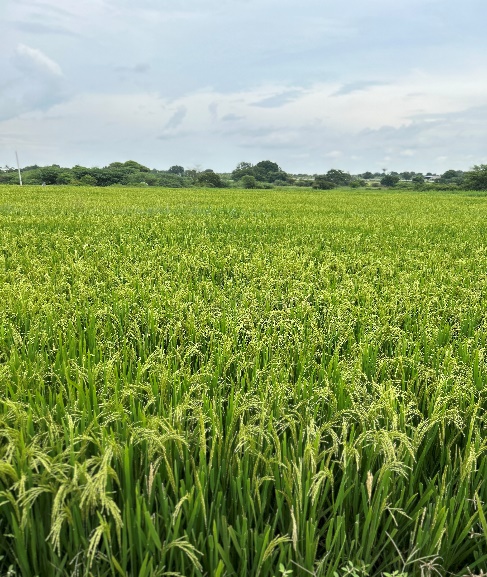
(Rice Farm)
Season Duration:
-Sona Masoori and RNR: Take about 4 months from cultivation to milling.
-Hamsa Rice: Takes 3 months to mature.
For all rice varieties, the first 2 months are critical for the plant’s growth. After this period, the crop is ready for harvesting and is then sent to the mill.
Farming Process:
Rice cultivation begins by soaking the seeds for 3 days before planting. The plants are watered for about 2 hours a day per acre using irrigation techniques. After two months, the crop is harvested, and farmers prepare the land for the next round of cultivation or leave it uncultivated. Rice is grown twice a year in this region.
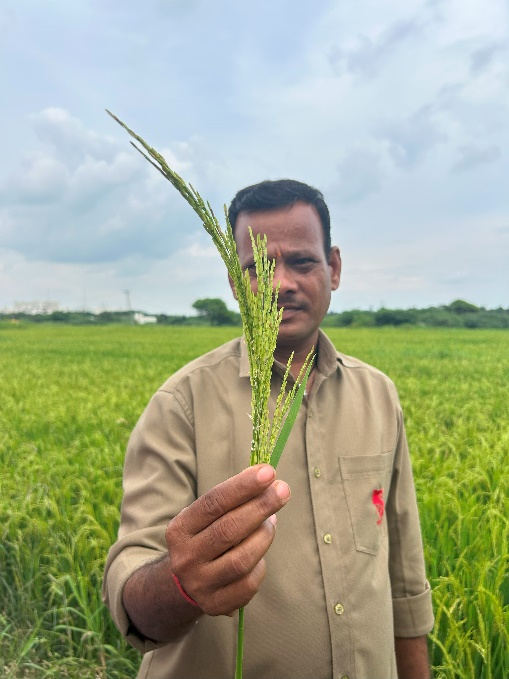
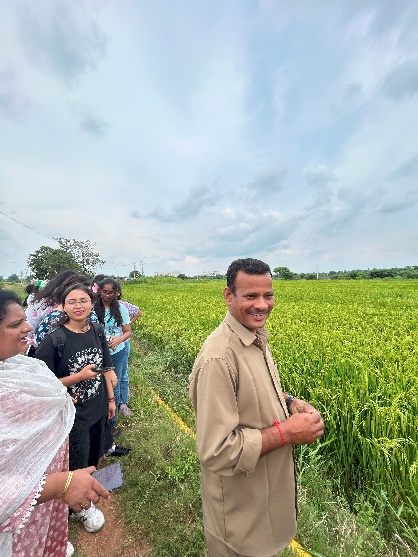
(Appreciation for Employee Hospitality and Guidance)
Pesticide Use:
The use of DAP and Potas fertilizers was mentioned. Potas is particularly important because, without it, rice grains do not develop properly. These pesticides ensure healthy grain production.
Number of Farmers Required:
Rice farming is more labour-intensive than cotton:
- A tractor is used for ploughing, but for planting and other manual processes, about 10 people are needed to work for a day per acre.
Soil Types:Rice is primarily grown in Red and Black soils, which provide the nutrients required for successful rice cultivation.
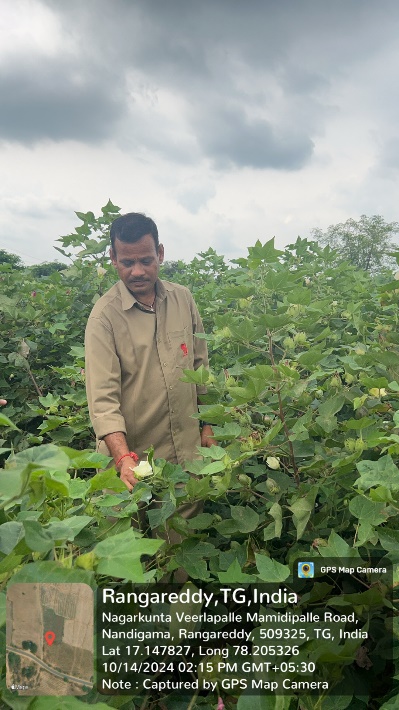
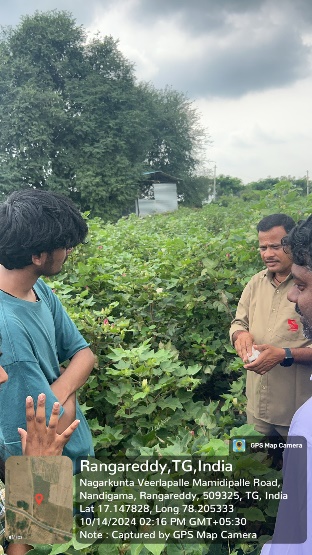
(Explaining the Process of cultivation)
Other Observations:
Cotton or vegetables may be planted. Land may remain uncultivated.
3. Guava Farm
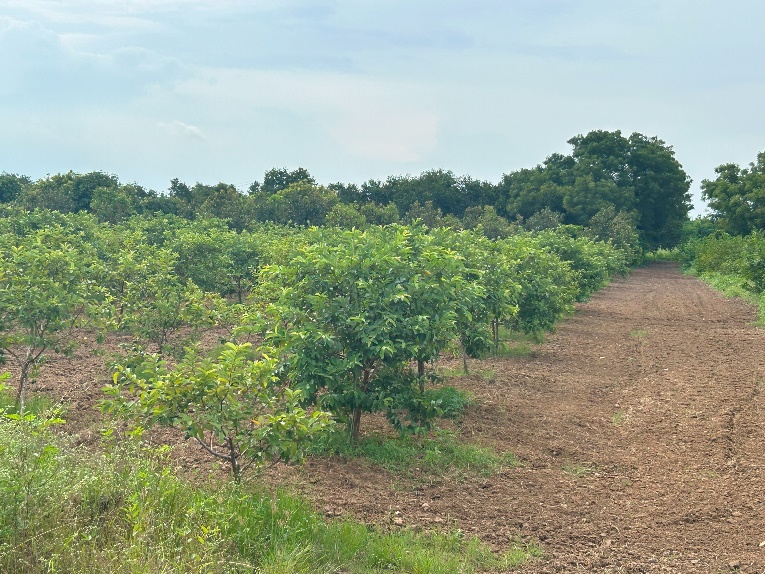
(Guava farm)
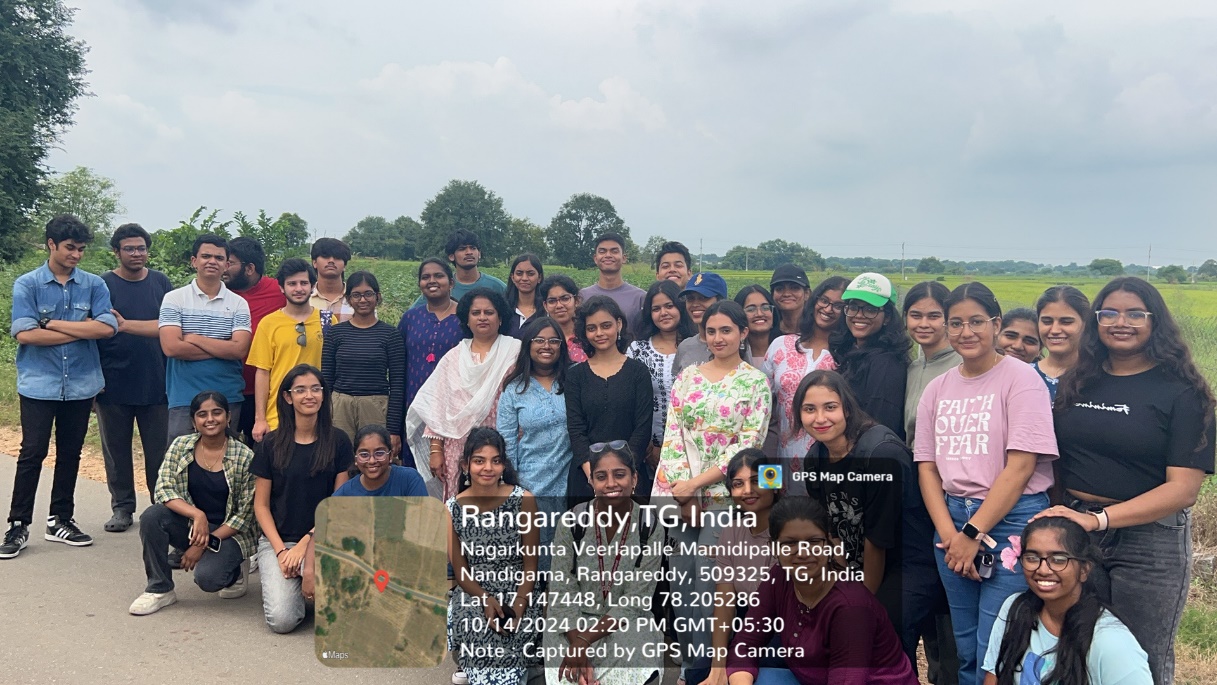
(SCMS Batch 23-27 Field Visit)
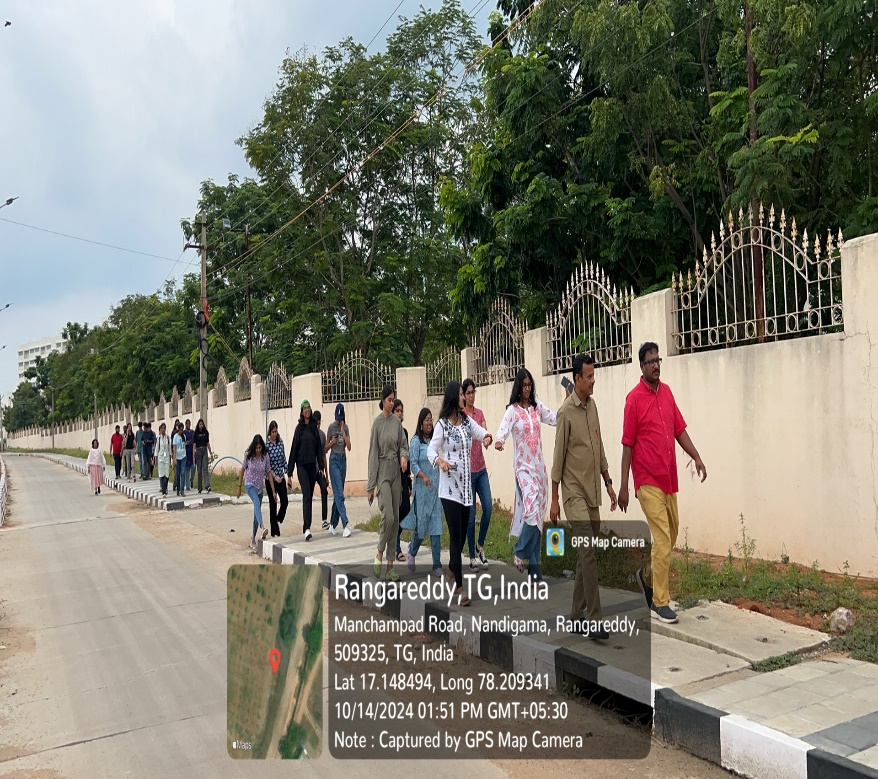
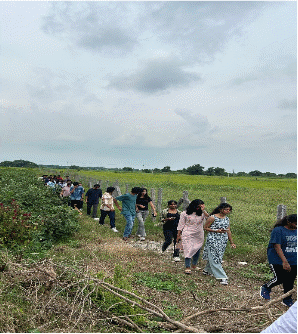
(Students walking through the fields)
Conclusion
The field visit provided valuable insights into both cotton and rice farming. Cotton requires fewer farmers but a longer growing season, while rice is labour-intensive with a quicker turnaround. Both crops thrive in black and red soils, with efficient irrigation systems being crucial for maintaining crop health. The use of fertilizers and pesticides plays a vital role in ensuring good yields, particularly for rice. Cotton offers higher profitability, while rice, though labour-intensive, is essential for local consumption.
The visit has highlighted the need for both sustainable practices and support for farmers in ensuring the successful cultivation of these vital crops.